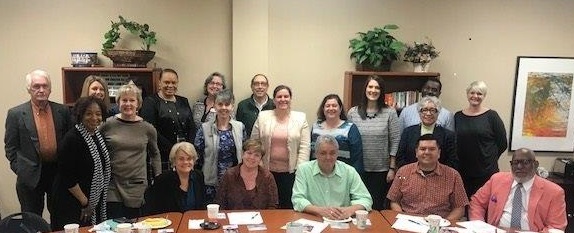Talking about race and racism isn’t easy for most Americans. But nonprofits should be at the front line of increasing equity and inclusion. The Pasadena Executive Roundtable (pasadenaexecutiveroundtable.org) tackled this tough conversation in our March and April meetings. Thanks to Brenda Castillo-Nogales of the National Hispanic Media Coalition, Jorge Camarena of Journey House, Allen Edson of NAACP Pasadena, and LaWayne Williams of the Tournament of Roses for sharing their perspectives as people of color and giving the many EDs in the room ideas on how to diversify our organizations, especially at the leadership level.
Some resources:
- Diversity vocabulary list: https://theavarnagroup.com/resources/equity-inclusion-diversity-vocabulary/
Ideas from the meeting include:
- Make sure your client base is represented on your board and in your staff
- Have an advisory committee of clients or community members; cultivate committee members to take on board roles
- board members should all receive training on their roles and responsibilities, which helps a wide diversity of people serve effectively on a board, whether they’re new to board service or not. (For example, someone who works at a large corporation may not know that most nonprofit run on lean budgets, so may need to learn about nonprofit culture. Or a youth-serving organization may want to bring more young people onto their board. Training all board members will help them have an explicit understanding of their role, so that the whole board is on the same page, whether they’re 18 or 80.)
- Consider needs that non-traditional board members might have; for example, if your organization works with low-income families, can you provide child care to facilitate having a client parent on your board?
- Cultivate your existing talent, whether staff, clients or volunteers. Think about long-term succession planning, whether that means replacing management staff or board member and start cultivating talent early on.
- Be intentional about diversity. Does your staff and board represent your community, ethnically, racially and age-wise? If not, be intentional about approaching people who might bring needed perspectives.
- Step our of your comfort zone. Talk with leaders of color in your community about what your board or staff needs to do to be more equitable; these conversations feel awkward and scary to many white people and you may hear a lot that your organization needs to change. But NOT having the conversation perpetuates the problem; better to risk a little discomfort and make the world a better place!
- Be patient; systems of racism and oppression have existed for a long time. But keep at it; you and your organization will be better off by engaging the richness of ideas and perspectives in your community.

